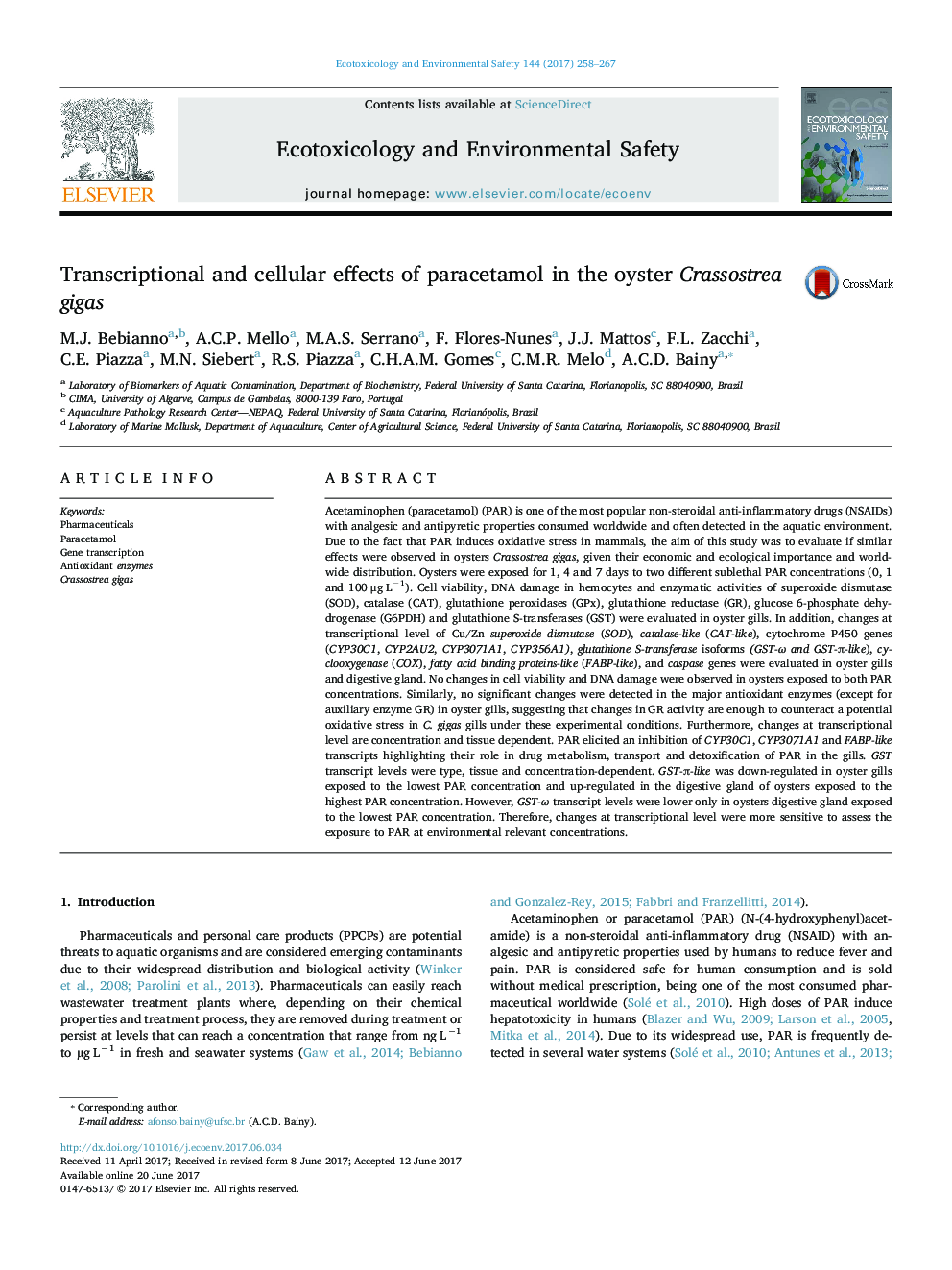| کد مقاله | کد نشریه | سال انتشار | مقاله انگلیسی | نسخه تمام متن |
|---|---|---|---|---|
| 5747483 | 1618920 | 2017 | 10 صفحه PDF | دانلود رایگان |

- Paracetamol does not change antioxidant enzymes in the gills of the oyster C. gigas.
- Paracetamol does not induce changes in hemocyte viability in C. gigas.
- There is no DNA damage in C. gigas hemocytes induced by Paracetamol.
- Changes of some gene transcriptional levels are tissue, concentration and time dependent.
Acetaminophen (paracetamol) (PAR) is one of the most popular non-steroidal anti-inflammatory drugs (NSAIDs) with analgesic and antipyretic properties consumed worldwide and often detected in the aquatic environment. Due to the fact that PAR induces oxidative stress in mammals, the aim of this study was to evaluate if similar effects were observed in oysters Crassostrea gigas, given their economic and ecological importance and worldwide distribution. Oysters were exposed for 1, 4 and 7 days to two different sublethal PAR concentrations (0, 1 and 100 μg Lâ1). Cell viability, DNA damage in hemocytes and enzymatic activities of superoxide dismutase (SOD), catalase (CAT), glutathione peroxidases (GPx), glutathione reductase (GR), glucose 6-phosphate dehydrogenase (G6PDH) and glutathione S-transferases (GST) were evaluated in oyster gills. In addition, changes at transcriptional level of Cu/Zn superoxide dismutase (SOD), catalase-like (CAT-like), cytochrome P450 genes (CYP30C1, CYP2AU2, CYP3071A1, CYP356A1), glutathione S-transferase isoforms (GST-Ï and GST-Ï-like), cyclooxygenase (COX), fatty acid binding proteins-like (FABP-like), and caspase genes were evaluated in oyster gills and digestive gland. No changes in cell viability and DNA damage were observed in oysters exposed to both PAR concentrations. Similarly, no significant changes were detected in the major antioxidant enzymes (except for auxiliary enzyme GR) in oyster gills, suggesting that changes in GR activity are enough to counteract a potential oxidative stress in C. gigas gills under these experimental conditions. Furthermore, changes at transcriptional level are concentration and tissue dependent. PAR elicited an inhibition of CYP30C1, CYP3071A1 and FABP-like transcripts highlighting their role in drug metabolism, transport and detoxification of PAR in the gills. GST transcript levels were type, tissue and concentration-dependent. GST-Ï-like was down-regulated in oyster gills exposed to the lowest PAR concentration and up-regulated in the digestive gland of oysters exposed to the highest PAR concentration. However, GST-Ï transcript levels were lower only in oysters digestive gland exposed to the lowest PAR concentration. Therefore, changes at transcriptional level were more sensitive to assess the exposure to PAR at environmental relevant concentrations.
Journal: Ecotoxicology and Environmental Safety - Volume 144, October 2017, Pages 258-267